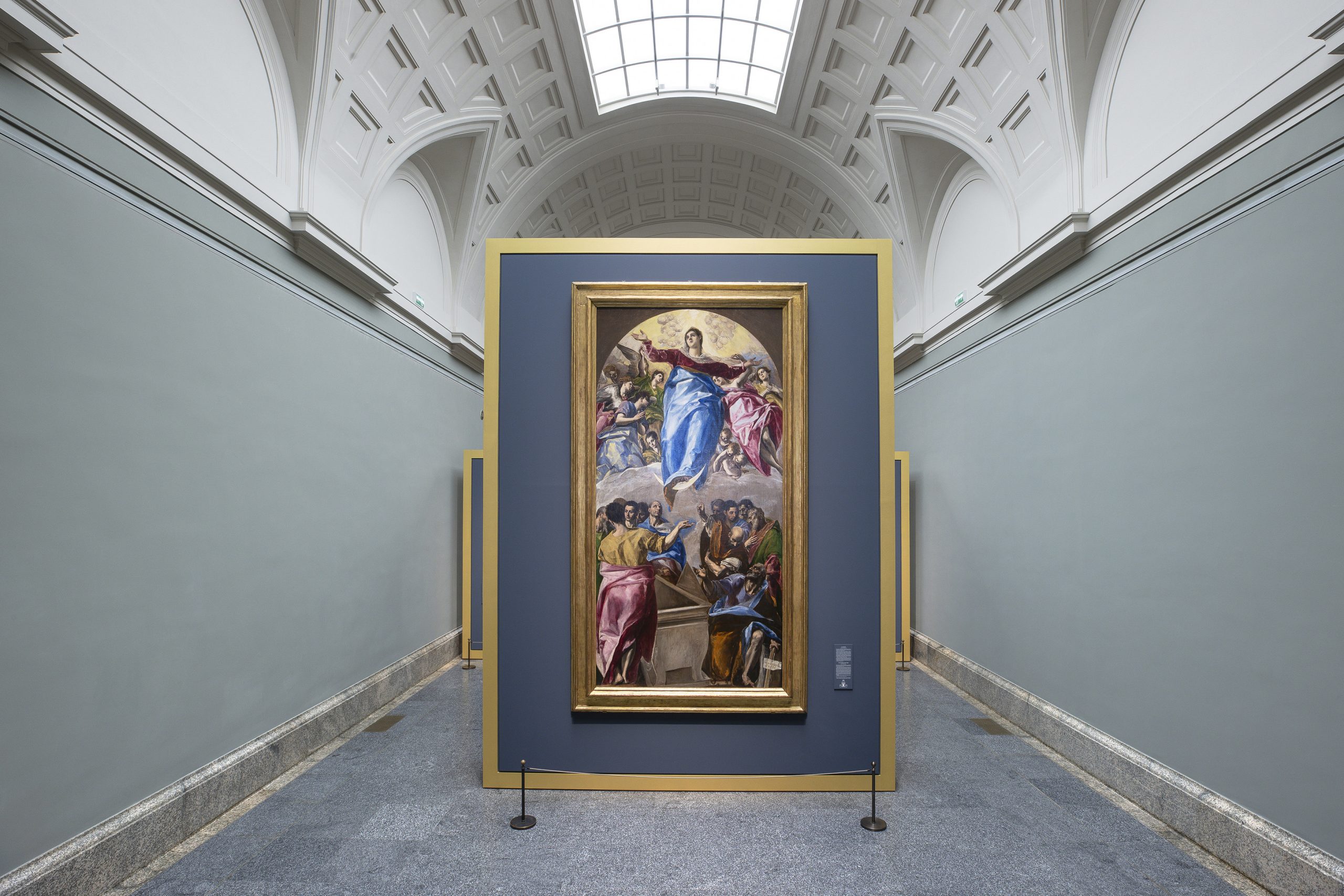Spain’s Prado Museum is mounting an exhibit that brings together the works the Greek painter Doménikos Theotokópoulos, better known as El Greco, completed for the Monastery of Santo Domingo el Antiguo in his first major commission.
The exhibit reunites works that El Greco, a master of the Spanish Renaissance, made for the church, and marks the first time they have been brought together since their dispersion, thanks to to the loan of the main altarpiece, The Assumption, by the Art Institute of Chicago which has owned it since 1906.

El Greco, The Assumption of the Virgin (1577–79). The Art Institute of Chicago. Gift of Nancy Atwook Sprague in memory of Albert Arnold Sprague.
In The Assumption, the Virgin Mary ascends to heaven on a crescent moon over Jesus’s open tomb while aided by a group of angels. It has a companion, made for the attic of the altarpiece, titled The Trinity, that visually connects above it. For it, El Greco used works by Michelangelo and Albrecht Durer as references. It is housed at the Prado Museum.
In the main altarpiece, The Assumption is flanked by four other canvases which depict John the Baptist and St. Bernard on the left side and John the Evangelist and St. Benedict on the right side, which were meant to act as intermediaries between the earthly realm and the divine. Those works are housed at the monastery and in private collections.

El Greco, The Adoration of the Shepherds. Photo: Colección Fundación Botín
Other works El Greco made for the altarpieces include a depiction of the Adoration of the Shepherds, a scene from the nativity; the Resurrection; and The Holy Face, an iconographic depiction of an apocryphal story in which a woman obtained the “true image” of Jesus from a cloth he had wiped his face on.
An article in the Spanish newspaper El Pais seems to indicate that the only work of the nine not included in the exhibit is the portrait of St. Bernard, which has been housed at the Hermitage Museum in Moscow and unable to travel.

El Greco, Saint Benedict. Photo: © Museo Nacional del Prado
And for the works that are housed at the monastery, a team from the Prado Museum had to convince the nuns to let them borrow the paintings.
“It was difficult,” Leticia Ruiz, the head of the Prado’s Spanish Renaissance painting collection, told the newspaper. She added that the monastery also lives off of its visitors and from the sale of “delicious marzipans” that they make. So, the museum agreed to restore one of its pieces by the painter Eugenio Cajés in exchange for the loan.
Funnily, the Prado Museum’s exhibit comes several years after France’s Louvre Museum tried, and failed, to borrow three works by El Greco from them. One of those works was The Holy Trinity, which the French museum hoped would round out its massive retrospective with dozens of the artist’s work.

Image of the exhibition galleries El Greco. Santo Domingo el Antiguo. Photo: © Museo Nacional del Prado
El Greco was first documented in Spain in June 1577 and quickly received the commission for the new monastery, which was designed and jointly paid for by a powerful dean of the cathedral named Diego de Castilla and a Portuguese woman named Doña María de Silva. According to the museum, the two benefactors were buried at the monastery. The Greek artist was appointed to make the altarpieces at the suggestion of Diego’s son Luis de Castilla, who had met him in Rome a few years earlier. He completed it in 1579.
“The result could not have been more dazzling. He revealed himself as a perfectly developed artist, with a creative maturity that linked him to some of the best painters of the Italian Renaissance,” the Prado Museum said on its website. “These canvases also captured the fundamental aspects of El Greco’s characteristic pictorial construction.”
“El Greco. Santo Domingo el Antiguo” is on view at Museo Nacional del Prado, Madrid, through June 15, 2025.

